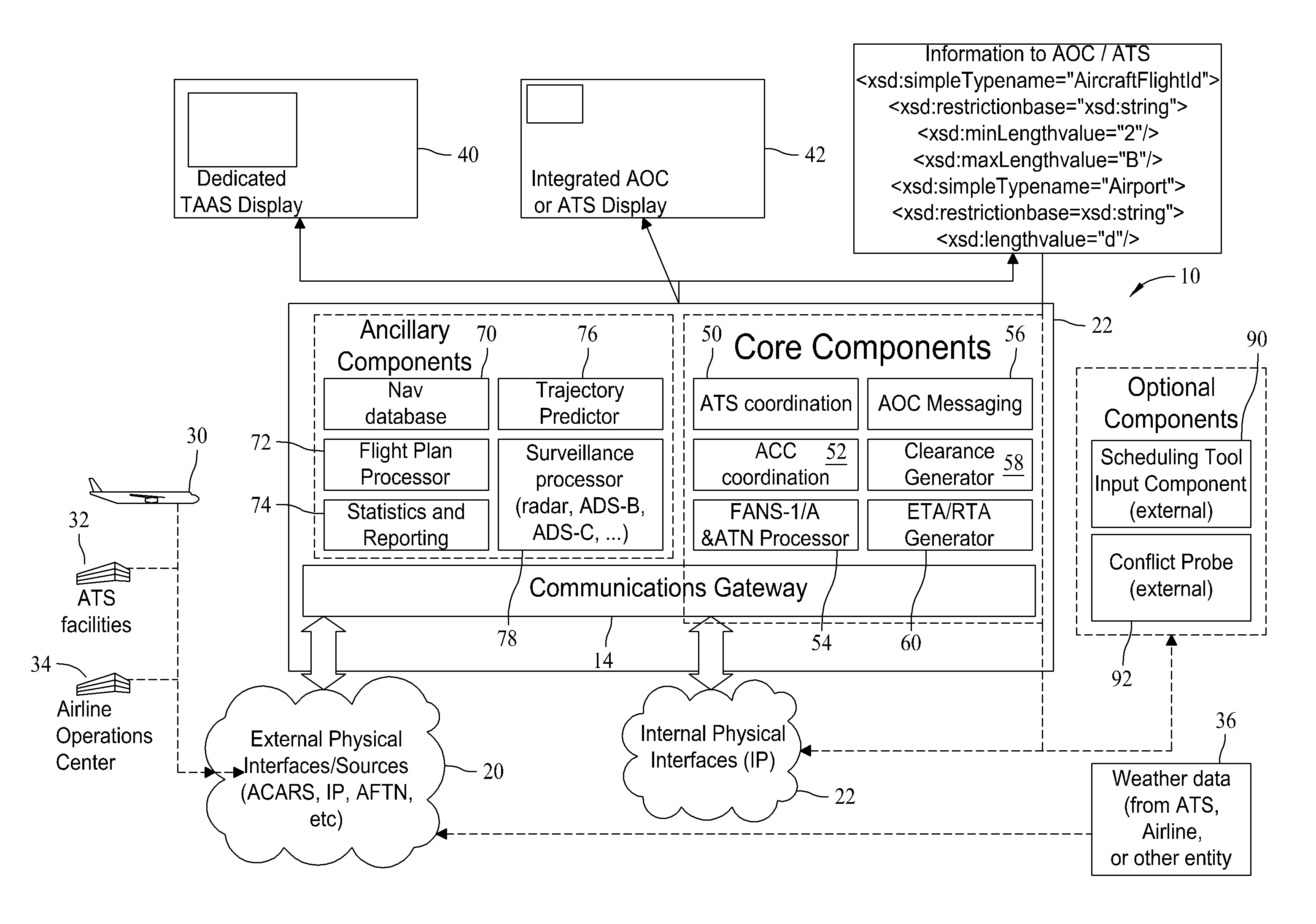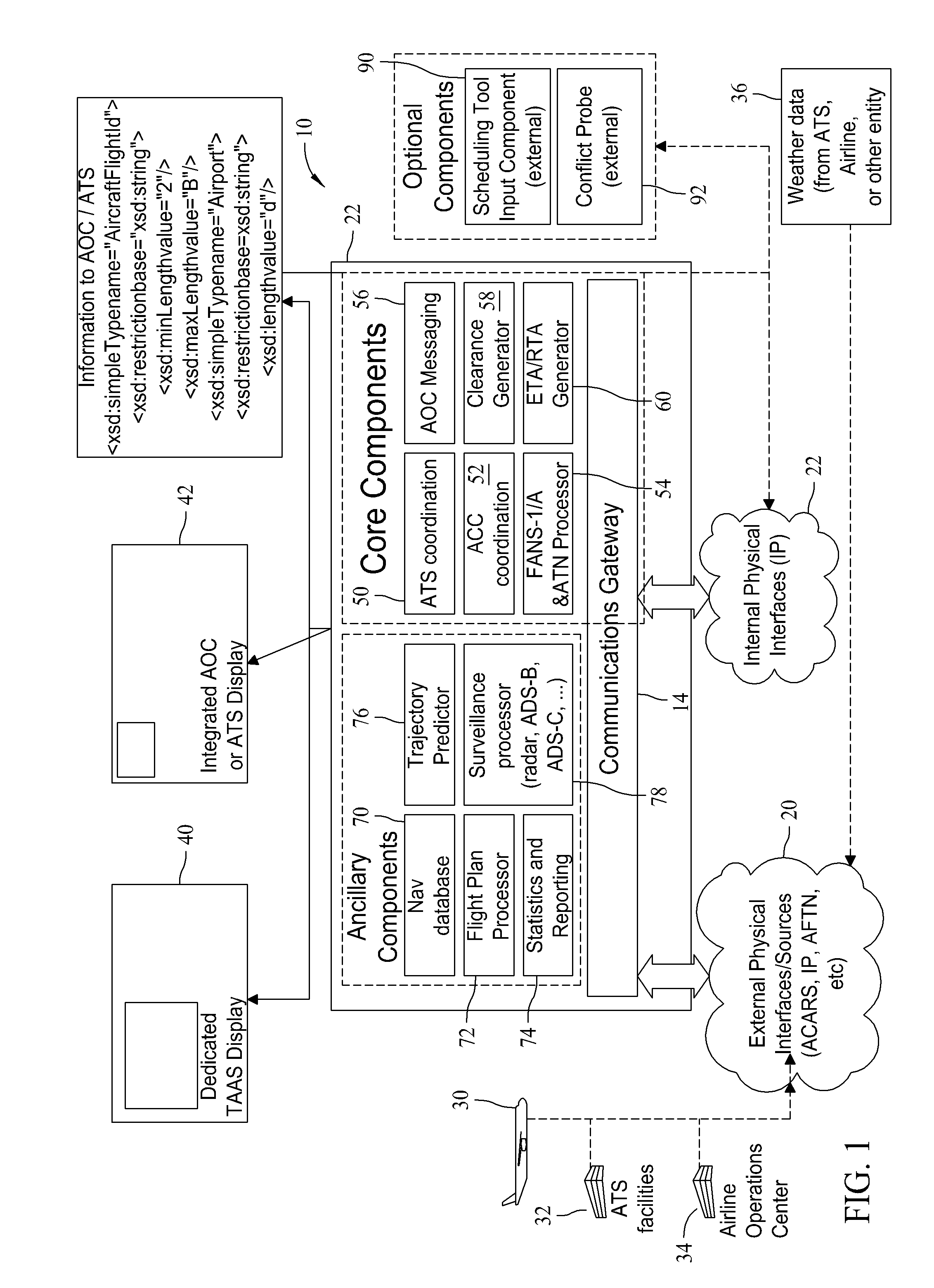Methods and systems for tailored allocation of arrivals
a technology of arrivals and methods, applied in the field of managing airspace, can solve the problems of not being able to descend at the most optimal profile, not being able to efficiently use available airspace, and being difficult to manage airspa
- Summary
- Abstract
- Description
- Claims
- Application Information
AI Technical Summary
Benefits of technology
Problems solved by technology
Method used
Image
Examples
Embodiment Construction
[0021]The described embodiments are utilized to calculate and dynamically provide an aircraft with the most optimal descent profile given the constraints of safety, airline preferences, aircraft performance, airborne flight path logic, terrain, weather, and air traffic. More specifically, the described embodiments relate to ground automation and logic enclosed in a Tailored Arrivals Allocation System (TAAS) which, using detailed knowledge of airborne automation and performance, ground system configuration, air situation, and aircraft operator preferences, determines the most efficient descent profile for an aircraft within the specific circumstances present in the airspace at the time of arrival.
[0022]Based on input data from multiple aircraft, aircraft operator systems, aircraft systems, and ground air traffic control systems, the TAAS integrates the parameters expected to be encountered during an arrival sequence such as aircraft performance, airborne flight path logic, air traffi...
PUM
 Login to View More
Login to View More Abstract
Description
Claims
Application Information
 Login to View More
Login to View More - R&D
- Intellectual Property
- Life Sciences
- Materials
- Tech Scout
- Unparalleled Data Quality
- Higher Quality Content
- 60% Fewer Hallucinations
Browse by: Latest US Patents, China's latest patents, Technical Efficacy Thesaurus, Application Domain, Technology Topic, Popular Technical Reports.
© 2025 PatSnap. All rights reserved.Legal|Privacy policy|Modern Slavery Act Transparency Statement|Sitemap|About US| Contact US: help@patsnap.com



